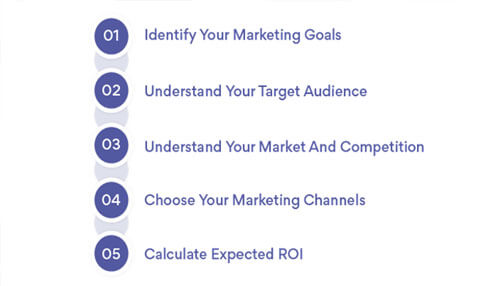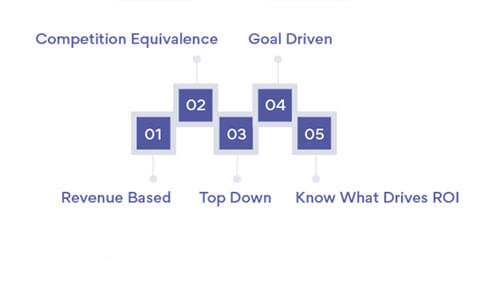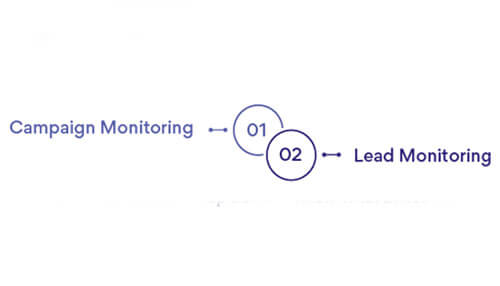A marketing budget allocation is a part of any marketing strategy to publicize its products and services. It might be particularly challenging to establish a marketing budget allocation for small businesses if you’ve never made marketing investments before.
In this post, we provide you with advice on how to start a marketing budget allocation, what your marketing spend might look like, how to keep track of your marketing budget, and some sample marketing budget templates that you can use as a reference.
- What Is A Marketing Budget?
- Why Do You Need It?
- How To Do Calculation?
- How To Track?
What Is A Marketing Budget?
The amount of money set aside by a business to pay marketing costs is the marketing budget allocation.
Marketing budgets are frequently developed on a quarterly or annual basis.
Budgets for marketing should be thorough and cover every project that your team intends to work on, both now and in the future.
A marketing budget, as opposed to an advertising budget, covers all aspects of marketing rather than just ad campaigns.
Why Do You Need a Marketing Budget Allocation?
You can prevent future problems by setting aside money for marketing campaigns. If your initiatives are not adequately supported, they do not have the necessary scope, people, or marketing tools.
A marketing budget allocation will enable your team to allocate funds precisely for things like employee salaries, office expenses, equipment purchases, marketing communications, ad design, and other charges.
Therefore, with the help of a comprehensive study, you can establish the appropriate budget and allocate the proper amount of money for each project.
By employing marketing budgets, you can align your marketing strategy with the goals of your business.
Additionally, team members get an idea about how they need to allocate marketing costs to the projects.
How To Develop A Marketing Budget?
1) Identify Your Marketing Goals
Determine your short- and long-term marketing goals as part of a larger picture—your marketing plan—to create an efficient marketing budget allocation (also known as a marketing strategy).
It seems reasonable that your main marketing goal is to boost gross income by using a sales funnel or direct sales.
Consequently, keep in mind that it usually takes time for marketing to result in sales. Your goals may need to change as your marketing campaigns get started.
1. Short-Term Goals
2. Reduced the bounce rate of websites by 5%.
3. Get a considerable amount of good comments each week on posts on social media.
4. Gain 100 new followers every month on social media channels to increase business exposure.
5. Long-Term Goals
6. Get three of your major emphasis keywords to rank on the first page of Google.
7. Over the next three years, develop a sales funnel that consistently brings in 20% more consumers.
8. Create an email marketing automation flow that will save your team five hours per week.
2) Understand Your Target Audience
A fictionalized version of your target audience is called a buyer persona. Although you can have more than one buyer persona, aim for no more than five since not everyone will fit into your target budget.
So, here are some methods for gathering information to assist in creating your buyer personas:
- Take a poll of your current clients and create customer segments.
- Interview those you believe might be in your target market.
- To ascertain the demographics of your audience, use Google Analytics.
- To monitor consumer contact with your brand, use Facebook Insights.
Include the following details in each buyer persona:
- Location
- Age
- Relational status
- Work title
- Estimated income
- Education
- Motives and objectives
- Sources they use to research
- What facilitates their way of life?
- Why do they stay up at night?
3) Understand Your Market and Competition
To comprehend your target market better, you should do some study. Explore all the primary and second reasons.
Examine the information and provide detailed responses regarding your target market.
Look at your customers’ demographics. Who lives there? What is the typical salary and level of education? Existing external forces that might have an impact on them and ultimately have an impact on sales? The economy’s current trends influence how you prepare your budget.
Other trends can have an impact on your market. What, for instance, is happening in technology today? Are customers making purchases or paying in alternative ways?
Assessing the needs and wants of your market is another technique to comprehend it. What are the most significant demands that your business can meet for the market?
These won’t necessarily be needs for your particular good or service, but rather general needs. Your target market might want to feel safer in their surroundings or save more money.
Having a budget planner also involves researching the competitors. Who has a strong performance? What kinds of advertisements and marketing techniques do they now employ? How much money is set aside in the budget for the marketing division?
Thus, based on the economic sector, the type of industry may have an impact on how much money they spend on marketing.
4) Choose Your Marketing Channels
You should divide your marketing channels into four main categories, which include digital marketing. Thus, choose a market where your buyer personas are to get the maximum revenue.
1. Digital Marketing
2. Online content marketing, automated or manual email marketing, pay-per-click or social media advertising, search engine optimization, and social media marketing are all examples of digital marketing channels.
3. Inbound Marketing
4. Digital marketing and several inbound marketing channels cross paths.
5. Various forms of inbound marketing include content marketing, including SEO, blogs, videos on YouTube, Vimeo, e-books, and others.
6. Outbound Marketing
7. Because it might be challenging to track at times, integrating it with inbound marketing is beneficial. Email marketing is the outbound marketing strategy that can be tracked the most.
8. Direct mail, press releases, trade exhibitions, television and radio commercials, and promotional merchandise are more examples of outbound marketing.
9. Brand Awareness Campaign
10. Campaigns to raise awareness might use the channels mentioned above, as well as social media marketing, advertising, content marketing, public relations, and video marketing – advertising.
You may more accurately establish your marketing budget allocation for small businesses now that you know the channels when developing a marketing strategy.
Therefore, the projections of using each of the above marketing channels are distinct. Social media is one of the most cost-effective marketing channels, so, as a small business, you can start your marketing from here.
5) Calculate Expected ROI
Next, determine the projected cost and potential ROI for each marketing activity.
A rough estimate might help you decide how to divide your marketing budget, even though you don’t know precisely what your ROI will be.
Be particularly cautious to include all of your prospective costs, even the less obvious ones, when calculating your budgeting.
Some expenses that you might incur include:
- Bringing on a new team member, freelancer, or agency
- Software and equipment
- Possible failures include PPC advertising that doesn’t convert.
Calculating your marketing budget allocation can be challenging, but you can start by looking at industry benchmarks for the channels you’re employing.
According to Wordstream, the typical conversion rate for Google Ads on mobile search is 4.40% across all industries. However, averages differ per industry.
The average conversion rate for the tourism and travel industry is 3.95%, but the average for health is 4.63%.
Examining your previous campaigns’ ROI and the track record of the firm you’re working with is beneficial.
Altogether, estimating your expenses ensures that you distribute enough funds to each channel. You may gauge the value of your investments in each channel by estimating your ROI. You might wish to put more money into high-ROI approaches.
How To Do Calculation For A Marketing Budget?
Companies can create small business marketing cost budgets using a variety of methods.
For instance, in the past, a marketing budget allocation was typically determined as a proportion of revenue. However, alternatives like goal-driven budgeting are now being accepted by businesses.
You can determine your brand’s marketing budget in the following ways:
1) Revenue-Based
One technique to determine your marketing spending budget is to analyze your annual income sheets and set a proportion aside.
Basically, some companies might set aside 6.5 to 8.5 percent for marketing. For more recent business endeavors, the percentage might be larger. Businesses that are under five years old should think about allocating 10% to 12% of their budget to marketing.
2) Competition Equivalence
You might also simply budget using the same amount to match your competitor’s spending based on your earlier research.
Hence, your rivals’ spending will help you to know about the market trends and their next move.
3) Top-Down
There is no predetermined budgeting template for how much you should spend on weather in the quarter or year with the help of the top-down budget plan method.
Instead, management establishes a budget and instructs the marketing division to adhere to it.
4) Goal-Driven
In goal-driven marketing, management and marketing, decide on objectives and establish a budget that will enable them to match.
For instance, one objective would be to increase your social media following by X amount, and X number of conversions on your website could be another objective.
The aim is then given a monetary value. As an example, you might value each user who follows you on social media at $0.50. Gaining 100 new followers would cost $50 toward this goal.
5) Know What Drives ROI
Income from marketing expenses is the trickiest and most crucial marketing metric.
Creating and then optimizing your marketing budget depends on knowing what influences your return on investment.
One should change all tactics and always track their target audience now and then.
Accordingly, do your marketing through paid social media, email marketing, and direct mail, while reducing general advertisements to reduce costs and increase return on investment.
How To Track Your Marketing Budget?
Monitoring your marketing budget is essential to determining its effectiveness.
Although there are other marketing budget tracking solutions available, Microsoft Excel is often used by organizations because it is enough for the job.
1) Campaign Monitoring
Create a line item for each campaign that includes the name of the campaign and the amount invested.
Altogether include how much each campaign cost as well as the wages of the workers that participated. Notate any areas where timing and campaigns need to be adjusted.
2) Lead Monitoring
Create one line item per lead with the date, lead source, campaign, designated salesperson, remarks, status, and income produced.
Go slowly and change one important aspect at a time when modifying your marketing budget or approach.
Comparatively, simply changing the photo in a Facebook advertisement and raising the budget by a few dollars per day could have a significant impact.
Marketing Strategy In Business Plan
A marketing strategy is a detailed road map that outlines the tactics, budget, and long-term goals for your company’s marketing efforts.
Your marketing strategy and marketing budget allocation serve as key tools for your entire business, keeping your staff concentrated on specific objectives.
According to some studies, up to 85% of small- to mid-size businesses don’t have a written strategy in their business plan to go along with their budgets.
It explains why so many marketers are tactically focused; rather than considering goals and strategies, they are working out how to spend a set budget.
Although it takes time, building a marketing strategy in a business plan requires consistency and expertise in marketing.
Hence, an effective marketing strategy usually includes:
- Financial targets
- Positioning technique
- Branding tactics
- Overview of the good or service
- Specific objectives by product, medium of distribution, and/or consumer group
- Sales strategy
- Significant marketing campaigns
- A thorough budget
- Dates for progress reviews
- Market analysis
Conclusion
How should we set up a marketing budget allocation in light of what we’ve learned?
At least one thing is now evident. The initial step is to evaluate the data you already have.
Set up the appropriate data. The procedure may then be made simpler, and your budget can be optimized depending on your real-time marketing results.
Thus, for any help in creating your marketing business plan, do visit Upmetrics.





